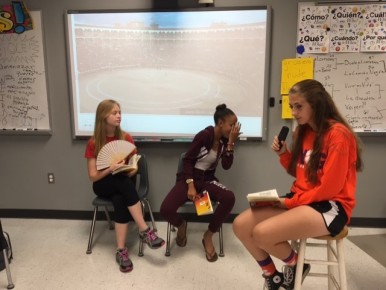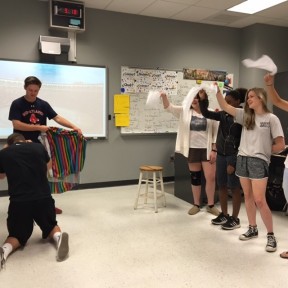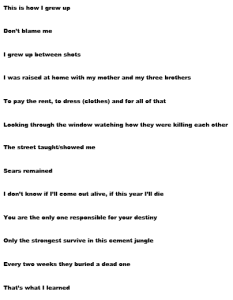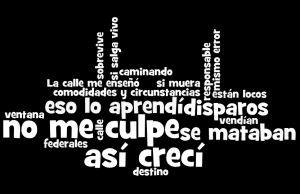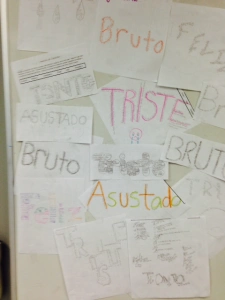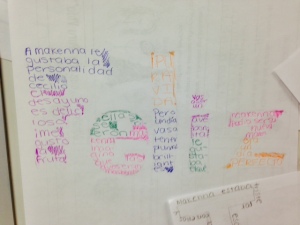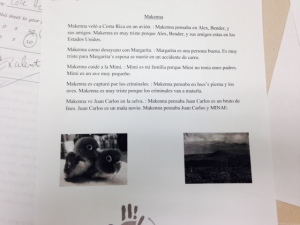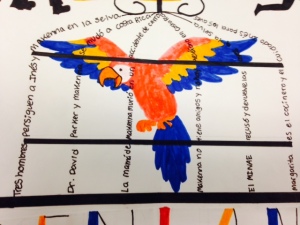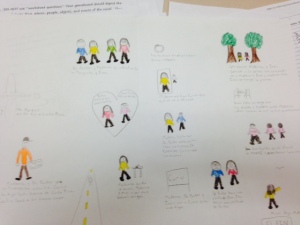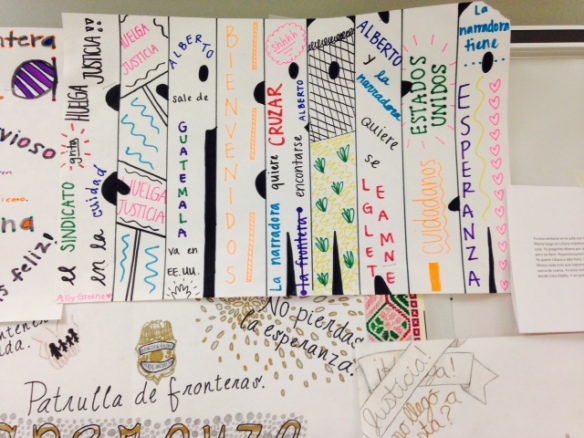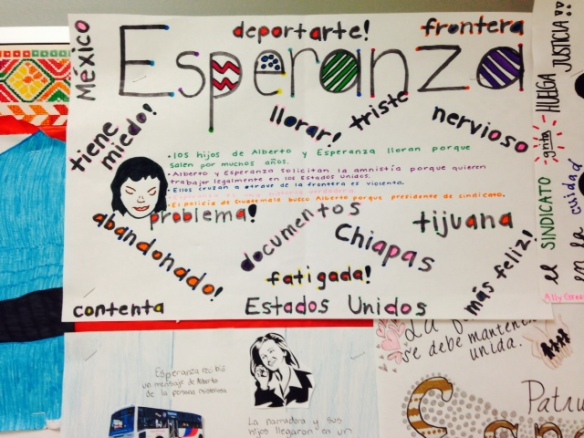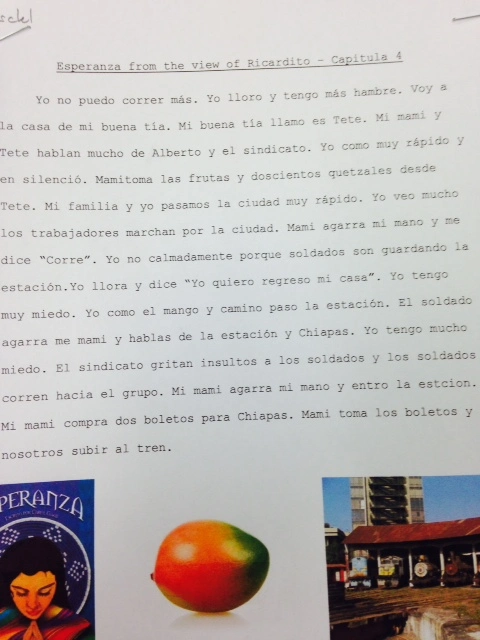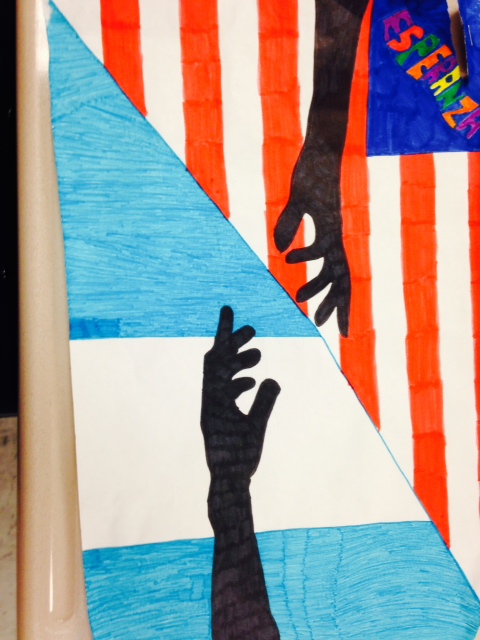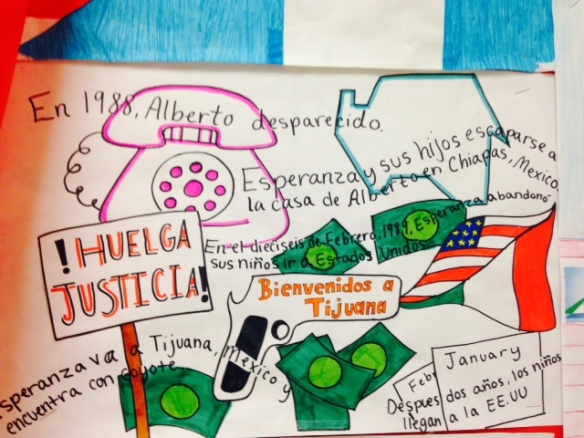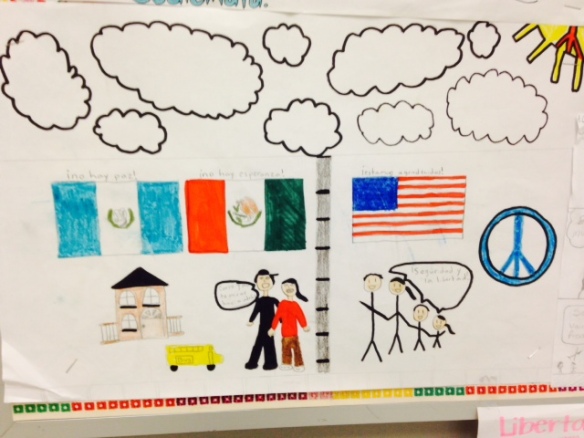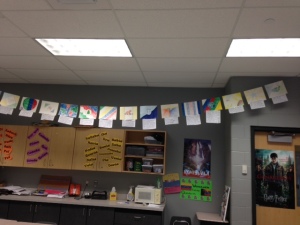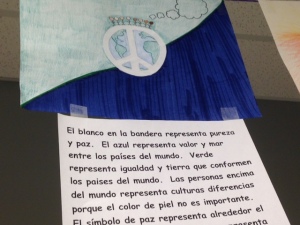I have blogged about the superb novel, Vida y muerte en la Mara Salvatrucha 13 from @fluencymatters four other times with the most recent post just from last month. So how, you might ask, would I still have even more music to add to the novel? Blame it on Sebastián Yatra…..
With his new song “No hay nadie más“, released on January 25, 2018 and already with 1 billion views, we have the perfect song for the relationship between our narrador and Analía. When I heard it for the first time, three weeks ago, I literally said, out loud, “Oh my gosh! This song is incredible!” and I knew that I absolutely had to use it despite the fact that we already have SO much focus music with this unit (Casas de Cartón, Gangsta, Los Rakas, Así Crecí, Adentro, Nada Valgo sin tu amor and Princesa).
My only other decision came down to timing, and I admit I was a bit torn. Should I introduce the song after we have read about what happens to Analía or do I introduce it before, incorporating some foreshadowing? I chose the latter. Consider the opening verses of the song:
Recuerdo aquel día ( I remember that day) (the day he went to collect the payment from the viejita at the fruit stand)
Como si fuera hoy (As if it were today)
No hay nada como ella (There’s nothing like her)
Ni siquiera me encontró ([she] didn’t even try to find me) (Analía arrived, strongly defending her grandmother and, unknowingly, opening the closed heart of the narrator)
Recuerdo todavía (I still remember)
La vez que la besé (the time I kissed her) (their hidden dates, the trip to the beach, the intense, revealing conversation they had)
Fue mi primer amor (It/she was my first love)
Y ahora escribo su canción (And now I write her song)
Once we had read Chapter 6 “Mi Trabajo”, without telling my students that we were working with a new song, we started some prework. I went through the lyrics and selected what I thought were, a) key phrases and, b) words that might interfere with comprehension. We started with the key phrases first, making sure everyone had 100% comprehension of them. I gave them about 10 minutes to incorporate as many as they could into a poem, in the shape of a heart: the document Chap 6 and Chap 7 No hay nadie mas, 
El narrador tiene 16 años y asiste a un colegio. También tiene trabajo. Pero, más importante, hay una muchacha. ??
Escribe frases, en forma de poema, usando las palabras en el banco de palabras. Puede cambiar la forma de las palabras si quieres.
Recuerdo Primer amor La besé Inexplicable Cuidarte
Mil razones Te voy a extrañar Soledad Terminar Nadie más
Surprisingly, all of the students in all three classes plunged right into the writing. After 10 minutes, they shared with their pod groups (the groups of 4 in the room), and then volunteered with the whole class. We listened, did some “pop up” grammar, and basically, really enjoyed what they had written. There were serious poems, funny poems, love poems, and more. They really wanted to keep going, but that was day one.
The second day, after reading chapter 7 “Mi novia”, we worked with the words that I felt could prevent some comprehension. Those words were:
Ni siquiera: not even, didn’t even
Todavía: still
Inigualable: incomparable
Cela: watches over
Disimular: hide
Extrañar: miss
Tempestad: storm
Aunque: although, even though
Renunciar: give up
Melancolía: melancholy
Lágrimas: tears
Risas: laughter
We went through the list and I then asked them to categorize those words as verbs, nouns or adjectives/adverbs/other. WHAT AN ACTIVITY! I was not prepared for the discussion that followed as they discovered that there were words that could potentially go in more than one category and even more, that it depended on how the word was being used in English. Example: still….. was it “She stilled the class with a glance” or “still water” or “I still don’t get this”. We had heated discussions in each class about “melancholy”…several didn’t understand the word in English and many wanted to argue that it was only an adjective. We had great discussion over the many ways to say watch/look/see and hide, in Spanish, and we even had some more “pop up” grammar as we worked , such as with the word tempestad….why is it feminine (other than they felt it sounded better that way!). I then had them create sentences that used more than one of the words at a time, and what sentences they created!!! They did not want to stop sharing! This was a wonderful activity for my students and I believe that working with the two sets of “lyric” words greatly enhanced their subsequent comprehension and reaction to the song.
Finally, on day three, I told them that the words were part of a new song. I did NOT use the music video; I merely gave them a traditional cloze activity. We no more got through the first two verses when I had students in each class commenting on the sweetness of the lyrics and groaning (remember, they do not know that Analía is going to die) that the overall sad tone of the music better not mean something bad! We worked our way through the song in stages, the first two verses, the chorus, the next two verses and then for the last round of the chorus (there were no cloze blanks), I asked them to find the 4 ways the song was lyrically different from the other choruses, and asked why that might be. Each class reacted identically: they loved it, they couldn’t get enough of it, they had to sing it. Also, they began to question what WAS going to happen to Analía (was it going to be Analía who would be “watching over” the narrator….from where?) and tying the lyrics about how the person in the song changes the life of the singer to what Analía is doing for the narrator. Finally, I let them watch the entire music video, which is quite simple, but much may be read into it. To reinforce how strong their reaction to this song was: I introduced the song last Tuesday, the students proposed their “favorite” songs for March madness on Thursday, voted on them on Friday…….No hay nadie más was in the top tier of vote getters!
On the fourth page of the document for the song, is an activity that I will use to open class on Monday: matching pictures/drawings to specific text from Chapter 7 and lines from the song. 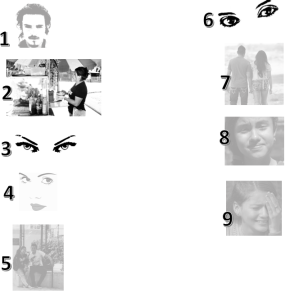
This one song is a classic illustration of how music contains the power to connect…..text with music, text with culture, text with emotions, text with our own identities. It literally is the perfect song for the pivotal events in Chapters 6 – 9.

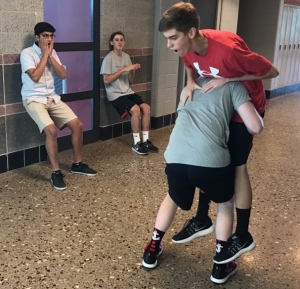 This image is a “freeze frame” mission from
This image is a “freeze frame” mission from 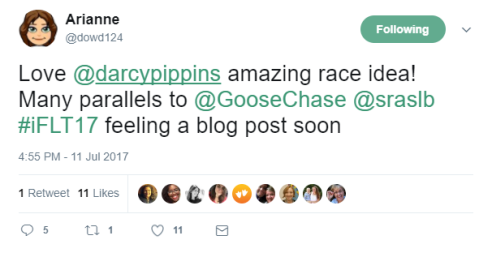



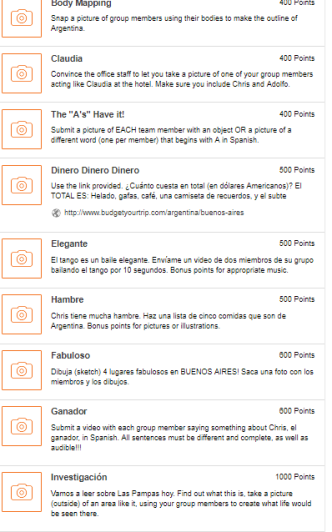

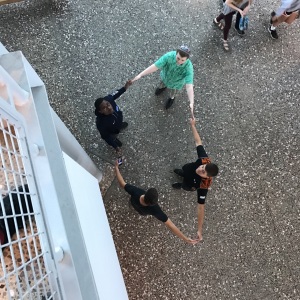

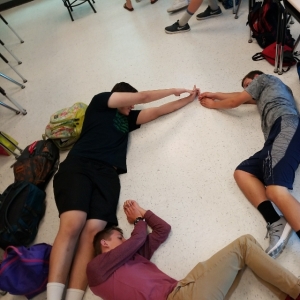

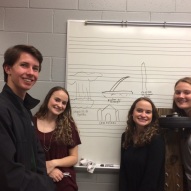






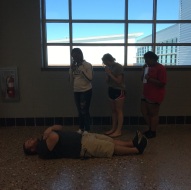

 Nine years ago, in 2008, I attended a world language conference in Maryland. It was in a session there that an idea was planted in my head. I wish that I could remember who the speaker was, but I don’t. She shared with us the idea of a type of talent show that featured talent in many languages. The next year, in 2009, the first Cabaret at James M. Bennett High School took place. Indeed, it was a celebration of talent: singing, dancing, skits, poetry recitation and instrumental selections that came from a variety of languages and cultures. Since then, we have held a Cabaret about every two years. I feel very strongly that one of my major responsibilities as a world language teacher is to open a window on the world for my students of rural Delmarva (rural, but with a quite high immigrant population) and to build bridges leading to acceptance and understanding of other cultures. Last night, we held a Cabaret that achieved that, and I will always remember it. It was so very special that I will cherish the warmth, the love and the good feelings for a very long time.
Nine years ago, in 2008, I attended a world language conference in Maryland. It was in a session there that an idea was planted in my head. I wish that I could remember who the speaker was, but I don’t. She shared with us the idea of a type of talent show that featured talent in many languages. The next year, in 2009, the first Cabaret at James M. Bennett High School took place. Indeed, it was a celebration of talent: singing, dancing, skits, poetry recitation and instrumental selections that came from a variety of languages and cultures. Since then, we have held a Cabaret about every two years. I feel very strongly that one of my major responsibilities as a world language teacher is to open a window on the world for my students of rural Delmarva (rural, but with a quite high immigrant population) and to build bridges leading to acceptance and understanding of other cultures. Last night, we held a Cabaret that achieved that, and I will always remember it. It was so very special that I will cherish the warmth, the love and the good feelings for a very long time.





















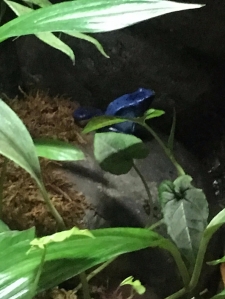




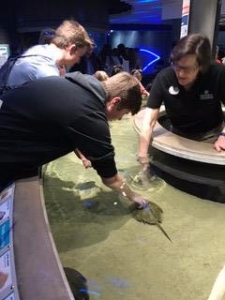


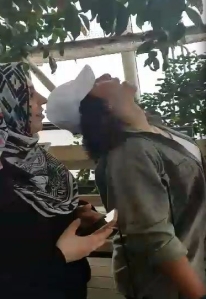
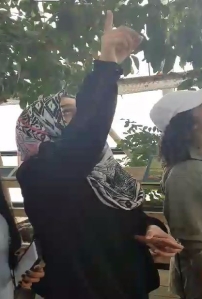
 I have written extensively about using music in my classroom, especially the past two years. More infrequently I may write a post about student projects or PBT’s. However, today, day 5 of summer break, I started thinking about the past school year and what I did to help my students remember the year and to be able to appreciate what we had covered. The last week of school, I created a “year in review” presentation for both my Spanish III and Spanish IV classes. While I was not surprised by the amount of music that we had incorporated into our units and into our opening routine each day, I was surprised by the amount and variety of their expressions in art. In my individual “end of the year” evaluation of the course, just about every single one of those 110 evaluations indicated music as a major way that they had learned Spanish and enjoyed class. Most of them now have Spanish music in their personal playlists. Also mentioned in those evaluations was the additional learning, exploring and enjoyment that was derived from other artistic endeavors. From Martina Bex’s “freeze frame” to Allison Weinhold’s “Baila viernes” to the creation of original songs and artwork to showcase and express what we were studying, art was everywhere.
I have written extensively about using music in my classroom, especially the past two years. More infrequently I may write a post about student projects or PBT’s. However, today, day 5 of summer break, I started thinking about the past school year and what I did to help my students remember the year and to be able to appreciate what we had covered. The last week of school, I created a “year in review” presentation for both my Spanish III and Spanish IV classes. While I was not surprised by the amount of music that we had incorporated into our units and into our opening routine each day, I was surprised by the amount and variety of their expressions in art. In my individual “end of the year” evaluation of the course, just about every single one of those 110 evaluations indicated music as a major way that they had learned Spanish and enjoyed class. Most of them now have Spanish music in their personal playlists. Also mentioned in those evaluations was the additional learning, exploring and enjoyment that was derived from other artistic endeavors. From Martina Bex’s “freeze frame” to Allison Weinhold’s “Baila viernes” to the creation of original songs and artwork to showcase and express what we were studying, art was everywhere.






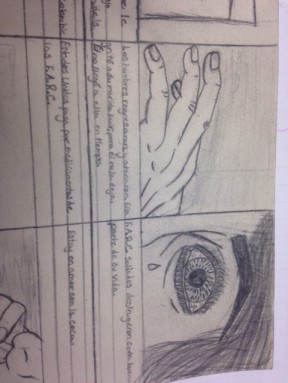












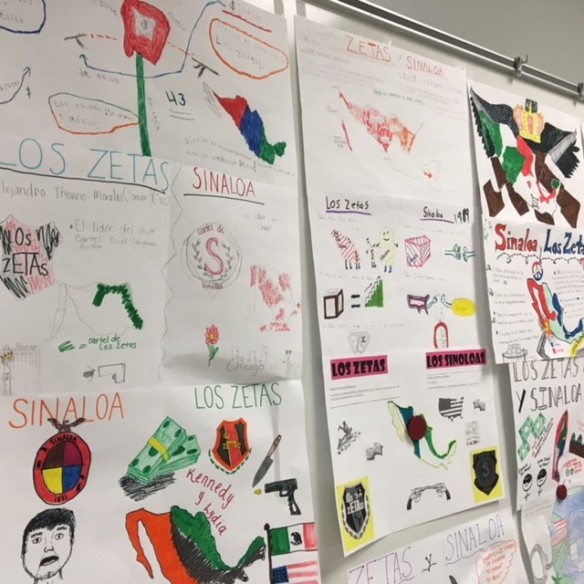 Cho
Cho





